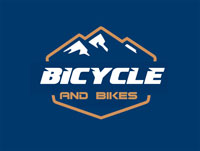Tandem Bicycles Terminology Guide: Important Terms and Tips
The Stoker
A.K.A – Tailgunner, Navigator, Rear Admiral or R.A
Riding in the REAR seat, the Stoker is essentially the engine room of the bike.
- The Stoker is NOT – as popular misconception would have it – the cruisy seat that you sit in when you want to kick back and put your feet up! In fact quite the opposite!
- A Stoker preferably needs good endurance and strength or at the very least to pedal consistently … although of course, it’s OK to take a break when you get up to cruising speed.
- Perhaps the most important role of the Stoker is to provide the power for getting up hills and slopes. If this sounds like too much hard work then maybe you should be cunning and convince your cycling buddy to stick to riding on the flat!
- To avoid causing accidents it is REALLY important that the Stoker remains centred on the bike and doesn’t try to steer. Erratic weight transfers can throw the tandem off balance and cause crashes.
- And remember that when the bicycle leans into a corner, then you need to as well – to ensure you maintain the tandem’s equilibrium.
The Captain
A.K.A – Steersman, Pilot
- Riding in the FRONT seat, the Captain is – as the name suggests – responsible for navigating the tandem bicycle safely. This including steering, balancing, gear shifting, dismounting and braking.
- The Captain should be the more skilled of the two cyclists and needs to possess sound judgement and be deft at handling a bicycle.
- Good upper-body strength is a real plus in this role, too.
- Perhaps the most important quality that the Captain needs to demonstrate is an ability to communicate and inspire confidence and trust in his/her Stoker …
- Many a tandem ride has ended in tears because the Captain either didn’t listen to or communicate with the Stoker!
- Remember the Captain is the eyes and ears of the tandem!
- As a Captain, you MUST communicate any changes in gear or road conditions, to the Stoker.
- It is also vital you listen to any requests your Stoker makes like turning back, slowing or stopping.
- If the Stoker doesn’t trust the Captain then you are doomed to failure … or a crash!
Tandem Bicycle Set Ups … Pedals, Cranks And Gears
There are two types of set up for a tandem’s pedals and cranks.
They are INPHASE (most tandem bicycles are like this), and OUT OF PHASE.
INPHASE
When the pedals and cranks of both riders are in sync with each other, so … if the Captain’s pedal is up then so is the Stoker’s.
It is a popular set up because:
- The Captain and Stoker ride in unison, giving a real sense of teamwork.
- Maneuvering the tandem bicycle at a slower pace is easier.
- Hitting the pavement with a pedal is less likely because the crank can be manipulated to an upright position simultaneously.
- Pumping is much easier when riding in sync.
A downside to having your tandem set up INPHASE is that on hill-climbs tandem bicycles can stall when both your cranks are in an upright position and no pressure is being applied to the pedals … thus you can lose momentum in your wheels and come to a standstill.
OUT OF PHASE
A tandem set up in an OUT OF PHASE configuration essentially means that the Captain’s and Stoker’s pedals and cranks

are not coordinated to turn in sync …
For example when the Captain’s pedals are vertical then the Stoker’s pedals will be horizontal. This particular set up is called ’90 Degrees Out Of Phase’ … for obvious reasons.
The advantages of using an OUT OF PHASE set up are:
- A steady supply of energy is being supplied to the wheels by the sequential pedal thrusts of the Captain and then the Stoker, alternatively.
- During hill-climbs an Out Of Phase configuration can mean there is less strain placed on the drive-train parts of the bike, (ie. pedals, cranks, chainwheels, bottom bracket, chain, derailers, rear sprocket(s) and rear hub), because force is being applied alternatively and not all at the same time.
An Out Of Phase set up can be a bit more tricky to master because the Captain and Stoker are constantly moving and pedalling in different rotations to each other.
The Captain also needs to always be aware of his / her Stoker’s pedal position when attempting to turn the bike … or the pedals may strike the pavement and cause a crash.
